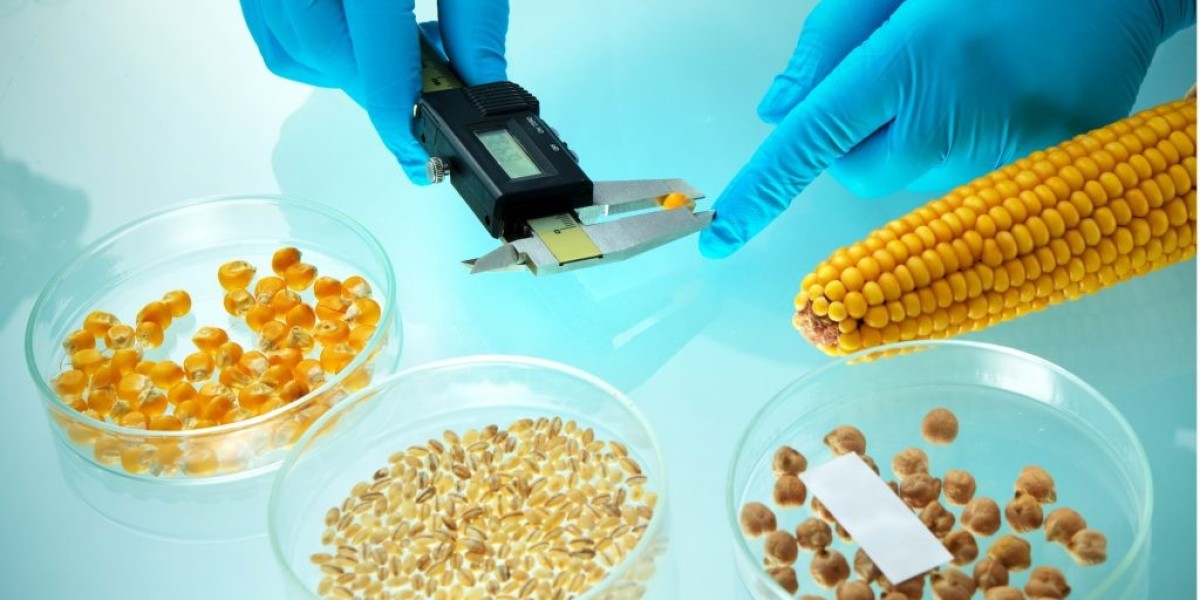Genetically modified (GM) crops are plants used in agriculture whose DNA has been modified using genetic engineering methods. The most common traits introduced to GM crops are herbicide tolerance and insect resistance.
Herbicide Tolerance in Genetically Modified Seeds
One of the earliest applications of genetic engineering in agriculture was to make crops tolerant to herbicides, so that weeds could be eliminated with herbicide spraying without killing the crops. Two main herbicide tolerance traits that have been introduced through genetic engineering are glyphosate tolerance and glufosinate tolerance. Glyphosate, marketed by Monsanto under the trade name Roundup, is a broad-spectrum herbicide that kills weeds but not crops engineered to be tolerant. Glufosinate is another broad-spectrum herbicide to which some crops have been engineered to be tolerant. These modifications allow farmers to spray herbicide over the top of entire fields and only kill the weeds, not the crops.
Insect Resistance through Bt Technology
Many GM crops are genetically engineered to produce one or more insecticidal proteins from the soil bacterium Bacillus thuringiensis (Bt). Known as Bt crops, they are insects resistant. Corn and cotton are the main crops engineered with Bt technology to be resistant to certain Lepidopteran or Coleopteran insect pests. The Bt proteins expressed in these GM crops only affect insect species within these orders and have no reported effects on other organisms including humans. Bt crops allow farmers to reduce or eliminate insecticide applications for key pests.
Potential Benefits of GM Crops
Besides reducing herbicide and insecticide use, Genetically Modified Seeds are promoted as having benefits such as increased crop yields through built-in pest and weed management, economic gains for farmers, increased food security by boosting global food supplies, and environmental benefits from reducing tillage needs. Many farmers have adopted GM crops due to economic and productivity advantages, reduced labor needs, and opportunities to farm more sustainably. Supporters argue that GM technology can play an important role in helping agriculture meet the challenging demands of feeding a growing global population.
Skepticism and Criticism around GM Crops
While GM crops have been embraced globally, controversy and skepticism also exists. Some criticism includes concerns over unknown long-term health and environmental risks, possibility of new superweeds and superpests developing resistance, lack of testing and regulation, domination of the seed industry by a few major corporations, and socioeconomic issues around licensing practices and seed patents. Opponents argue that natural plant breeding methods can achieve the same goals as GM without exposing the food supply or environment to potentially hazardous risks that genetic engineering may entail. There are also concerns that the spread of transgenes from genetically modified seeds to wild relatives or conventional crops cannot be prevented and could impact biodiversity. Developing countries are more cautious about adopting GM crops due to lack of local research capacity and health monitoring infrastructure.
Regulation and Labeling Debates
Given the potential risks as well as benefits, governments worldwide have established regulatory frameworks to assess the safety of GM crops before allowing their commercial cultivation and use in foods. Additionally, some nations and regions have adopted mandatory or voluntary labeling policies for foods containing GM ingredients so consumers can make informed choices. However, determining coherent and consistent regulations and standards across countries remains challenging given varied priorities, resources, political climates and differing scientific opinions on risk assessment. Ongoing debates exist around appropriate regulation stringency, standardized risk assessment protocols, definition of substantial equivalence in approving new GM traits, enforcement of regulations, segregation of supply chains, and clear communication of scientific consensus versus minority dissenting views to the public.
Future Prospects and Concluding Thoughts
Overall adoption of genetically modified seeds continues to rise globally, now cultivated on nearly 200 million hectares annually by over 20 countries. Their future will depend on continued research to develop improved strains, resolutions to ongoing legal and trade disputes around labeling and seed patents, long-term safety data to address public concerns, and regulation that supports both innovation and accountability. How nations shape coherent yet flexible policies balancing valid scientific, economic and ethical considerations around this complex technology will significantly impact its role in global agriculture and food systems for decades to come.
Get more insights on Genetically Modified Seeds
Discover the Report for More Insights, Tailored to Your Language
Priya Pandey is a dynamic and passionate editor with over three years of expertise in content editing and proofreading. Holding a bachelor's degree in biotechnology, Priya has a knack for making the content engaging. Her diverse portfolio includes editing documents across different industries, including food and beverages, information and technology, healthcare, chemical and materials, etc. Priya's meticulous attention to detail and commitment to excellence make her an invaluable asset in the world of content creation and refinement.
(LinkedIn- https://www.linkedin.com/in/priya-pandey-8417a8173/)



